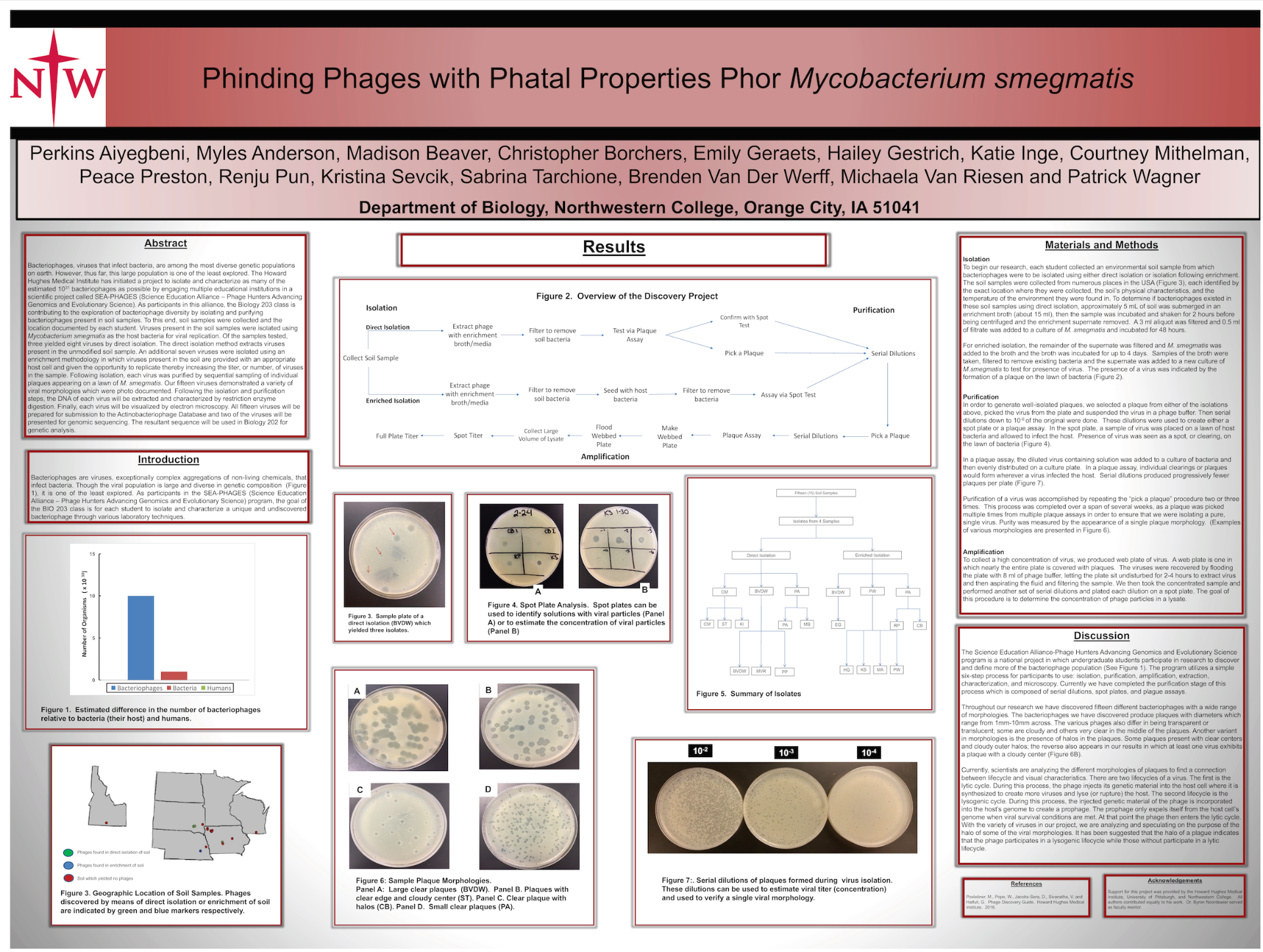Phinding Phages with Phatal Properties Phor Mycobacterium smegmatis
Perkins Aiyegbeni, Myles Anderson, Madison Beaver, Christopher Borchers, Emily Geraets, Hailey Gestrich, Katie Inge, Courtney Mithelman, Peace Preston, Renju Pun, Kristina Sevcik, Sabrina Tarchione, Brenden Van Der Werff, Michaela Van Riesen and Patrick Wagner
Mentor: Dr. Byron Noordewier
Department of Biology

Bacteriophages, viruses that infect bacteria, are among the most diverse genetic populations on earth. Thus far, however, this large population is one of the least explored. The Howard Hughes Medical Institute has initiated a project to isolate and characterize as many of the estimated 1031 bacteriophages as possible by engaging multiple educational institutions in a scientific project called SEA-PHAGES (Science Education Alliance - Phage Hunters Advancing Genomics and Evolutionary Science). As participants in this alliance, the Biology 203 class is contributing to the exploration of bacteriophage diversity by isolating and purifying bacteriophages present in soil samples. To this end, soil samples were collected and the location documented by each student. Viruses present in the soil samples were isolated using Mycobacterium smegmatis as the host bacteria for viral replication. Of the samples tested, three yielded eight viruses by direct isolation. The direct isolation method extracts viruses present in the unmodified soil sample. An additional seven viruses were isolated using an enrichment methodology in which viruses present in the soil are provided with an appropriate host cell and given the opportunity to replicate thereby increasing the titer, or number, of viruses in the sample. Following isolation, each virus was purified by sequential sampling of individual plaques appearing on a lawn of M. smegmatis. Our fifteen viruses demonstrated a variety of viral morphologies which were photo documented. Following the isolation and purification steps, the DNA of each virus will be extracted and characterized by restriction enzyme digestion. Finally, each virus will be visualized by electron microscopy. All fifteen viruses will be prepared for submission to the Actinobacteriophage Database and two of the viruses will be presented for genomic sequencing. The resultant sequence will be used in Biology 202 for genetic analysis.
